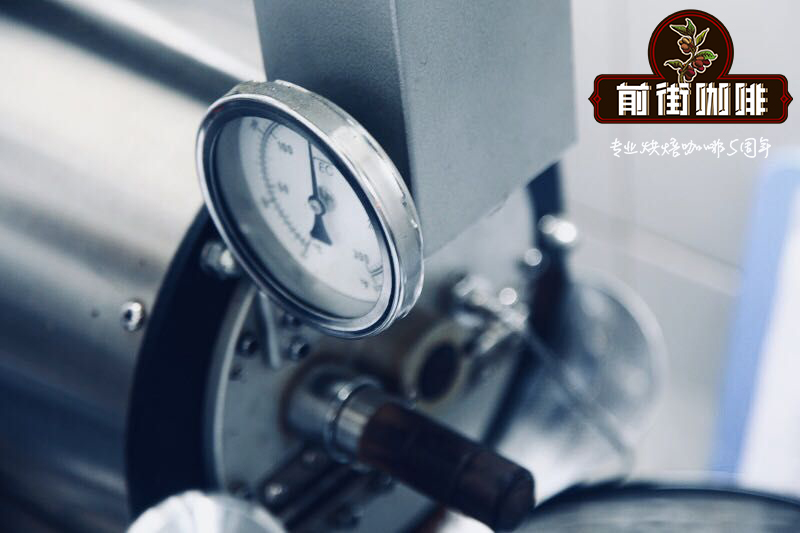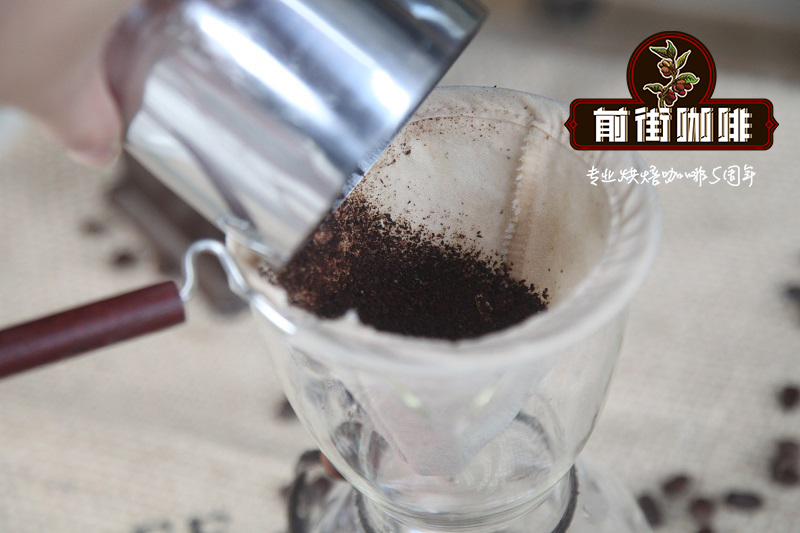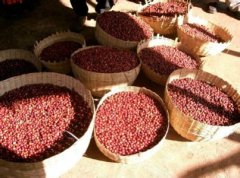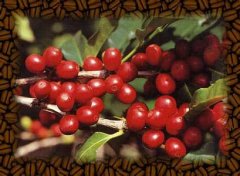The Origin and Flavor characteristics of aged Mantenin suggestions on aged Mantenin flushing and cooking

Professional coffee knowledge exchange more coffee bean information please follow the coffee workshop (Wechat official account cafe_style)
The pursuit of boutique beans, famous producing areas and manors has become a trend, as for old coffee beans (Aged bean) is still a strange term for consumers.
The so-called aged coffee beans (Aged bean) mean that raw beans age naturally by prolonging their storage time (usually 2 to 3 years). These changes include decreased acidity, color changes and thickening of beans. The storage environment must be cool and ventilated.
Properly stored coffee beans will change their taste and shape, such as reduced acidity, dark color and lack of moisture, thicker and thicker taste, sweetness with honey flavor, and some of the defects that originally belonged to raw beans become less obvious. Because the storage environment is dark and for a long time, aged coffee is always difficult to get rid of the complex flavor such as musty taste or commonly known as sack or pig and so on.
Aged beans (Aged bean) must be strictly and carefully controlled during storage, regularly flipped evenly, humidity and ventilation adjusted to prevent moth or mildew.
Generally speaking, the storage of aged beans does not take place in the producing area or manor, but is the business behavior of raw bean dealers or brokers.
Aged coffee is different from Indian monsoon coffee, which is the result of natural aging of raw beans through rapid water loss in raw beans during a short period of 3-4 months, which is young and strong. Old coffee beans are more different from old coffee. The flavor of raw coffee beans is preserved in the natural environment for about 12 months, and the weaker the flavor at the end is. The coffee beans that have been roasted for more than 12 months taste old and lack hierarchical changes, so they naturally lose the value of the products.
Not all coffee beans are suitable for storage as aged beans, and the raw beans that are usually selected for storage must have a strong physique. Therefore, the coffee beans produced in Indonesia's three important and well-known producing areas, Sumatra Mantenin, Sulawesi and Java, are the best choice for making aged coffee, especially the aged Mantenin. It is also an old coffee bean that is generally easy to buy in the world. The internationally renowned Hawaiian Kona also has a small amount of aged beans, but not many people know it, mainly because it is not the mainstream flavor.
The aged coffee is full-bodied, calm, mellow and fermented, the taste is very similar to Pu'er tea, warm and mellow colloid smooth and smooth, aged coffee and Pu'er tea is the delicate fermentation changes brewing over the years, but the aged coffee beans can not be stored as long as Pu'er tea, although there are great annual differences, coffee beans are fruits, Pu'er tea is leaves, there is still room for competition between the two.
Which kind of beans have better flavor and special performance, such as aged Mantenin, aged Sulawesi or aged Java?
The flavor of the coffee made by the deliberate storage process is very similar, and if there is any difference, it is only the mellow performance produced by the healthy quality of the raw beans at that time; even the aged Hawaiian Kona made of high-quality materials such as Hawaii Kona can not retain the unique volcanic smoke smell of Extra Fancy Kona, which is enough to awaken the soul aroma, delicate and elegant acidity and clear and clean balanced taste. Some, apart from the honey taste, consistency, mellow texture and low acidity of the aged Indonesian coffee beans, they still can't overcome the complex flavors such as mildew, leather, sacks and cellars.
Qianjie coffee roasting analysis: old coffee after a long period of storage, the moisture content will be relatively low, the appearance also looks crumpled black, Mantenin's raw bean density is high, coupled with the aging treatment reasons, so there is little moisture, all stages of firepower adjustment should be particularly careful, be careful not to let the original bean surface oil scorch.
Qianjie coffee is recommended to be brewed with flannel filter cloth!

Step 1
The brand new flannel filter cloth must be removed, soaked in boiling water for 5 minutes, and then placed on the metal ring.
If it is a used filter cloth, it should be boiled in boiling water for at least 3 minutes.
Step 2
Grind beans while soaking the filter cloth. Because of the special material of the flannel filter cup, the flannel filter cloth uses a little more coffee beans by hand than when using filter paper, and the taste of the filter will be better. Of course, the right amount of coffee powder should be loaded according to the size of the filter cloth. 2 cups (240c.c. Use 40 grams of beans. It is recommended to grind the coffee beans into a thickness between white sugar and fine sugar.
Step 3
Dry the filter cloth, twist it by hand, and then put the filter cloth in the middle of a clean dry towel to absorb dry.
Step 4
Rinse with hot water, preheat the filter cloth and drip filter, and then pour out the water.
Step 5
Pour the coffee powder loosely into the filter cloth without special compaction.
Step 6
Using a wooden mixing spoon or cream knife, gently flip the coffee powder from the bottom up, and finally pull the bottom of the bag to adjust the shape.
Step 7
Make a hole about a coin wide and a thumbtack deep at the top of the coffee powder. This is because the powder layer is deep, so it is convenient for hot water to spread in all directions and moist coffee powder evenly.
Step 8
After the hot water is set and cooled to about 80 degrees Celsius and 85 degrees Celsius, the water is injected from near the concave hole. It must be very slow at first, injecting 60 grams of water within 30 seconds. There is no need to soak all the coffee powder, capillarity will slowly spread the water. After the water injection is completed, wait for about 30 seconds.
Step 9
Start the second injection, this time faster than the first, with 140 grams of water in 60 seconds. At this time, the coffee will cause a large number of bubbles, which is a bit like the explosion of the universe in the movie. After the water injection is completed, wait 20 seconds, and the water level drops slightly.
Step 10
The last water injection, this time 120 grams of water in 30 seconds. The whole process takes 3 minutes to inject 320 grams of water. Because the filter cloth and coffee powder absorb about twice as much water as coffee powder, you can finally get about 240g of coffee, which is better than 1:6.
Using flannel filter bags to make coffee is time-consuming, so the temperature of the coffee is relatively low, and preheating the coffee cup can slightly increase the temperature of the coffee. But never reheat the coffee in any form.
END
Important Notice :
前街咖啡 FrontStreet Coffee has moved to new addredd:
FrontStreet Coffee Address: 315,Donghua East Road,GuangZhou
Tel:020 38364473
- Prev

On the essence of sun-drying and water-washing Yega-Xuefei-they are all coffee beans.
On the essence of sunburn and water washing: they are all coffee beans, and they are all coffee beans from the Yega Sheffei producing area of Ethiopia. It's just that the treatment method is different. One is to directly dry the coffee cherries in the sun, and then remove the flesh and parchment; washing is to remove the pulp and parchment and dry it. In fact, the traditional treatment of coffee is the sun. Because of coffee.
- Next

What is Mantenin, Golden Manning and Old Manning?
Lindongshan District, southwest of Toba Lake, is a new producing area. At present, the average annual output of Lindong Mantenin is about 1.5-18000 tons, mostly by half-sun treatment. Sumatra is known as the Spice Island, and the mountain tribes are in the green mountains, working with tigers, rhinos, vampire bats, cloves, cardamom and pepper to treat coffee beans in a unique three-stage drying way to create half-sun exposure.
Related
- Detailed explanation of Jadeite planting Land in Panamanian Jadeite Manor introduction to the grading system of Jadeite competitive bidding, Red bid, Green bid and Rose Summer
- Story of Coffee planting in Brenka region of Costa Rica Stonehenge Manor anaerobic heavy honey treatment of flavor mouth
- What's on the barrel of Blue Mountain Coffee beans?
- Can American coffee also pull flowers? How to use hot American style to pull out a good-looking pattern?
- Can you make a cold extract with coffee beans? What is the right proportion for cold-extracted coffee formula?
- Indonesian PWN Gold Mandrine Coffee Origin Features Flavor How to Chong? Mandolin coffee is American.
- A brief introduction to the flavor characteristics of Brazilian yellow bourbon coffee beans
- What is the effect of different water quality on the flavor of cold-extracted coffee? What kind of water is best for brewing coffee?
- Why do you think of Rose Summer whenever you mention Panamanian coffee?
- Introduction to the characteristics of authentic blue mountain coffee bean producing areas? What is the CIB Coffee Authority in Jamaica?

